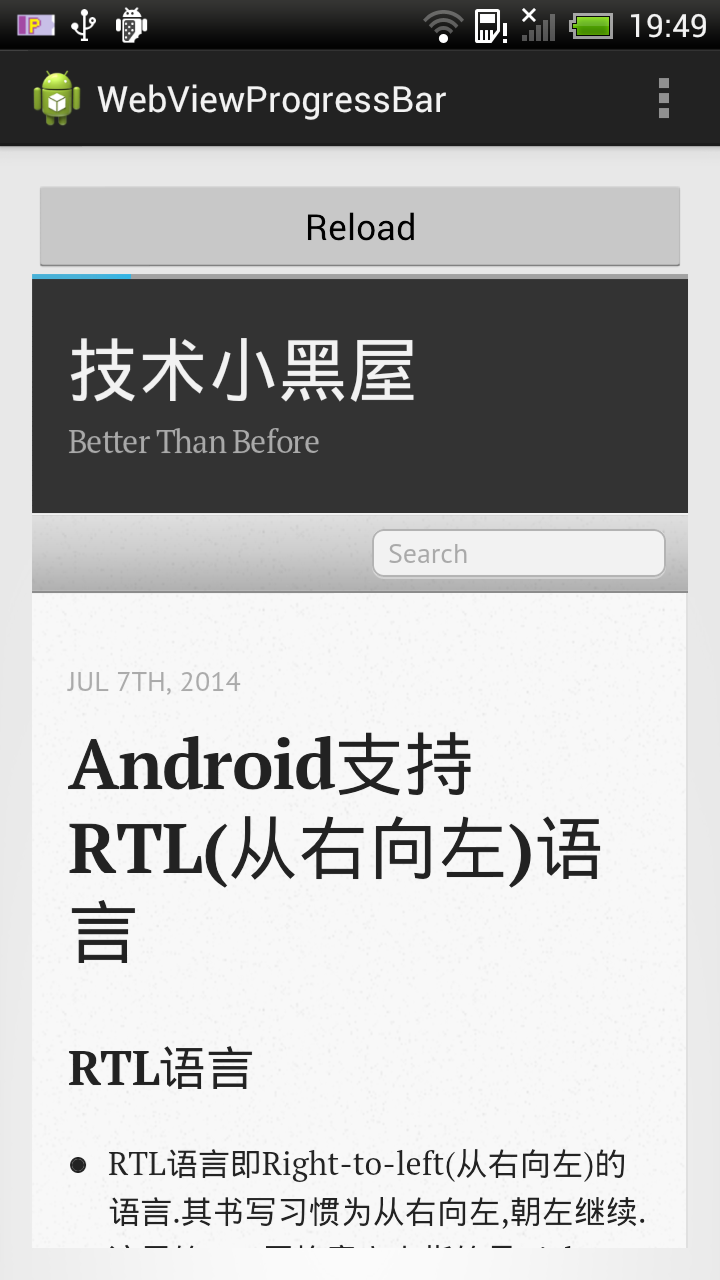編輯:關於Android編程
android中對數據操作包含有:
file, sqlite3, Preferences, ContectResolver與ContentProvider前三種數據操作方式都只是針對本應用內數據,程序不能通過這三種方法去操作別的應用內的數據。
android中提供ContectResolver與ContentProvider來操作別的應用程序的數據。
一、 使用方式
一個應用實現ContentProvider來提供內容給別的應用來操作,
一個應用通過ContentResolver來操作別的應用數據,當然在自己的應用中也可以。
1. ContentResolver的獲取
通過Context類:
復制代碼 代碼如下:
public abstract ContentResolver getContentResolver();
2. ContentResolver常用操作
復制代碼 代碼如下:
//查詢:
public final Cursor query(Uri uri, String[] projection,
String selection, String[] selectionArgs, String sortOrder);
//新增
public final Uri insert(Uri url, ContentValues values)
//更新
public final int update(Uri uri, ContentValues values, String where,
String[] selectionArgs)
//刪除
public final int delete(Uri url, String where, String[] selectionArgs)
以上操作實際是通過Uri來匹配ContentProvider, 再由ContentProvider來進行具體操作的。
操作的參數和操作sqlite各函數的參數意義是一樣的。
二、實現ContentProvider提供給外界訪問
調用者ContentResoler是通過一個Uri來找到相應的ContentProvider的來進行實際操作。
1. Uri概念
一個Uri的樣子如:
復制代碼 代碼如下:
scheme://authorities/path/id
如電話記錄:
復制代碼 代碼如下:
public static final Uri CONTENT_URI = Uri.parse("content://call_log/calls");
a.根據scheme不同調用不程序來處理, 常用的:content, android_resource, file, http等
b.authorities是provider定義的,在AndroidManifest.xml中定義
c.path和id就好理解的。
2. Uri定義
創建自己的Uri, 如:
復制代碼 代碼如下:
content://com.shguo.statistic/sms
一般數據中都有dir和item兩種(當然可定義多個)。為ContentProvider創建息的UriMatcher並添加這兩者:
復制代碼 代碼如下:
String AUTHORITY = "com.shguo.statistics";
UriMatcher sUriMatcher = new UriMatcher(UriMatcher.NO_MATCH);
sUriMatcher.addURI(AUTHORITY, "sms", SMS_DIR); //SMS_DIR = 1
sUriMatcher.addURI(AUTHORITY, "sms/#", SMS_ITEM); //SMS_ITEM = 2
contentProvider要根據傳入uri判斷是dir還是item來操作的。
復制代碼 代碼如下:
switch (sUriMatcher.match(uri))
來分步操作.
3. 定義MIME類型,
覆蓋getType方法:主要是根據uri來返回Provider的MIME類型
復制代碼 代碼如下:
public static final String CONTENT_TYPE = "vnd.android.cursor.dir/vnd.shguo.sms";
ublic static final String CONTENT_ITEM_TYPE = "vnd.android.cursor.item/vnd.shguo.sms";
getType()為:
復制代碼 代碼如下:
switch (sUriMatcher.match(uri)) {
case SMS_DIR:
return CONTENT_TYPE;
case SMS_ITEM:
return CONTENT_ITEM_TYPE;
default:
throw new IllegalArgumentException("Unknown URI " + uri);
}
4. 實現query, insert, delete, update四個操作。
具體的實現可以用sqlite, file等。並根據uri分情況操作。
a. query時如果是item加查詢條件id.
where = "_ID=" + uri.getPathSegments().get(1) + (!TextUtils.isEmpty(where) ? " AND (" + where + ')' : "";
最後要加上
cursor.setNotificationUri(getContext().getContentResolver(), uri);
b. insert時要求uri只能是dir. 成功之後返回一個加id的uri.
復制代碼 代碼如下:
Uri insertUri = ContentUris.withAppendedId(CONTENT_URI, rowId);
c. update、delete與query差不多。
復制代碼 代碼如下:
//注意通知注冊uri的觀察者。
getContext().getContentResolver().notifyChange(uri, null);
5. 在AndroidManifest.xml中定義
provider元素,主要屬性有:
復制代碼 代碼如下:
name => ContentProvider類名
authorities => content type的授權部分
multiprocess => true允許在每個客戶進程中創建provider實例,消除執行IPC的需求。
 Android自定義控件——自定義組合控件
Android自定義控件——自定義組合控件
前面幾篇博文介紹了Android如何自定義控件,其實就是講一下如何“從無到有”的自定義一個全新的控件,繼承View或者繼承ViewG
 Android中實現Webview頂部帶進度條的方法
Android中實現Webview頂部帶進度條的方法
寫這篇文章,做份備忘,簡單滴展示一個帶進度條的Webview示例,進度條位於Webview上面.示例圖如下:主Activity代碼:復制代碼 代碼如下:package c
 一步一步學android控件(之二十七)—— SlidingDrawer
一步一步學android控件(之二十七)—— SlidingDrawer
對於SlidingDrawer,官網上是這樣解釋的:SlidingDrawer將內容隱藏在屏幕之外,並且允許用戶通過拖動handle將內容顯示到屏幕上。一個Sliding
 Android主線程、子線程通信(Thread+handler)
Android主線程、子線程通信(Thread+handler)
Android是基於Java的,所以也分主線程,子線程!主線程:實現業務邏輯、UI繪制更新、各子線程串連,類似於將軍;子線程:完成耗時(聯網取數據、SD卡數據加載、後台長